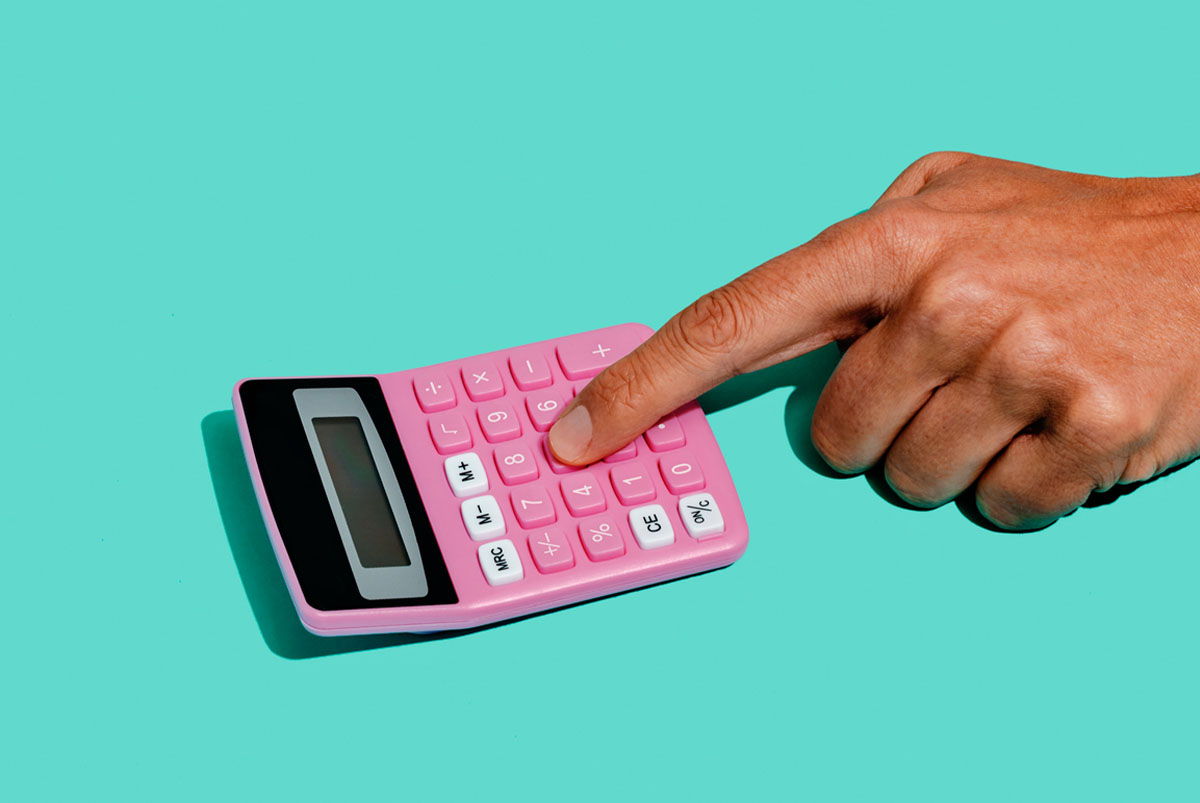Home>Finance>How Long Do Credit Card Transactions Stay Pending


Finance
How Long Do Credit Card Transactions Stay Pending
Modified: March 10, 2024
Learn how long credit card transactions stay in pending status and the impact on your personal finances. Gain insight into the finance aspect of pending transactions.
(Many of the links in this article redirect to a specific reviewed product. Your purchase of these products through affiliate links helps to generate commission for LiveWell, at no extra cost. Learn more)
Table of Contents
- Introduction
- Understanding Pending Credit Card Transactions
- Factors Affecting the Duration of Pending Transactions
- Common Reasons for Pending Credit Card Transactions
- How Long Do Pending Credit Card Transactions Typically Last?
- Impact of Pending Transactions on Available Credit
- Strategies for Dealing with Pending Credit Card Transactions
- Monitoring and Managing Pending Credit Card Transactions
- Conclusion
Introduction
When making credit card transactions, it’s not uncommon to encounter the term “pending.” Pending transactions are temporary holds placed on your credit card for purchases or charges that have not yet been fully processed. Understanding how long these transactions stay pending can help you manage your finances effectively and avoid unnecessary confusion or concerns.
When you make a purchase using your credit card, the transaction goes through a series of processes before it is finalized and reflected in your account. During this time, the transaction may be marked as pending, indicating that the funds have been reserved but have not been officially deducted from your available credit or posted to your account statement.
While pending transactions can be a normal part of credit card use, the duration of their status can vary. In some cases, pending transactions may only last a few hours, while in other instances, they can last several days or even up to a week. The length of time can depend on a variety of factors, which we will explore in more detail in the next section.
It’s important to note that pending transactions do not necessarily indicate an issue or problem with your credit card. They are simply part of the normal processing cycle. However, it’s always a good idea to closely monitor your pending transactions to ensure they are accurately reflected in your account and to address any discrepancies promptly.
In the following sections, we will delve deeper into the factors that can affect the duration of pending credit card transactions and discuss common reasons why transactions may remain in a pending state. We will also explore the impact of pending transactions on your available credit and provide strategies for managing and monitoring these transactions effectively.
Understanding Pending Credit Card Transactions
Before we dive into the factors and duration of pending credit card transactions, let’s start by understanding what pending transactions actually are. When you make a purchase with your credit card, the transaction goes through a series of stages before it is finalized and appears on your statement.
During the initial stage, known as authorization, the merchant sends a request to your credit card issuer to verify if you have enough available credit to cover the purchase. Your credit card issuer then places a temporary hold on the funds in your account, essentially reserving them for the transaction. This is what is referred to as a pending transaction.
During the pending state, the transaction is neither fully approved nor declined. Instead, it is in a temporary limbo, awaiting further processing. During this time, the merchant may complete additional verification checks or submit the final transaction details to the credit card network and the issuer.
It’s important to understand that pending transactions can vary in appearance and accessibility. Some credit card issuers may display pending transactions in real-time on their online banking platforms or mobile apps, while others may only show them once the transaction is finalized and the funds are officially deducted from your available credit.
It’s essential to keep an eye on your pending transactions to ensure they match your actual purchases and to confirm that they are not fraudulent charges. By regularly monitoring your credit card activity, you can quickly identify and report any discrepancies or unauthorized transactions to your credit card issuer.
It’s worth noting that not all transactions will enter a pending state. Some transactions, such as contactless payments or small purchases, may bypass the authorization process altogether and post immediately to your account. This can vary depending on the merchant, the type of transaction, and your credit card issuer’s policies.
Now that we have a solid understanding of pending credit card transactions, let’s explore the factors that can influence how long a transaction remains in a pending state.
Factors Affecting the Duration of Pending Transactions
The duration of pending credit card transactions can vary depending on several factors. Understanding these factors can help you manage your expectations and plan your finances accordingly. Here are some key factors that can influence the length of time a transaction remains in a pending state:
- Merchant processing time: The duration of a pending transaction can be affected by how quickly the merchant completes their processing and submits the transaction details to the credit card network. Some merchants may process transactions immediately, while others may take a few days to finalize and submit the transaction.
- Credit card network processing: Once the merchant submits the transaction details, the credit card network comes into play. The network validates the transaction and routes it to the appropriate credit card issuer for further processing. The processing time of the credit card network can contribute to the overall duration of a pending transaction.
- Credit card issuer policies: Different credit card issuers may have varying policies regarding how long they hold pending transactions. Some issuers may release the pending hold within a few hours, while others may take several days or until the transaction is cleared by the merchant.
- Weekends and holidays: The timing of your transaction can also impact how long it remains in a pending state. Transactions made on weekends or during holidays may experience delays in processing due to reduced business hours or limited staffing. This delay can prolong the pending status of the transaction.
- Transaction amount: In some cases, the amount of the transaction can influence how long it stays pending. Large purchases or transactions that exceed your typical spending patterns may trigger additional security measures, resulting in a longer pending period. This is done to protect against potential fraud.
It’s important to remember that each of these factors can have a cumulative effect on the duration of pending credit card transactions. While some transactions may clear quickly, others may take several days to post to your account. It’s always a good practice to monitor your pending transactions closely and verify that they are processed correctly.
In the next section, we will explore common reasons why credit card transactions may remain in a pending state.
Common Reasons for Pending Credit Card Transactions
There are several common reasons why credit card transactions may remain in a pending state. Understanding these reasons can provide insight into why a specific transaction may be taking longer to process. Here are some common factors that can contribute to pending credit card transactions:
- Authorization holds: When you make a purchase, the credit card issuer places an authorization hold on your account to ensure you have sufficient funds available. This hold temporarily sets aside the funds for the transaction, resulting in a pending status on your account. Authorization holds are common for purchases like hotel reservations, car rentals, or gas stations, where the final transaction amount may not be known immediately.
- Returns or refunds: When you return an item or receive a refund for a previous purchase, the credit card issuer may place a temporary hold on your account until the refund is processed. This is done to ensure that the funds are available to reverse the initial transaction and prevent any overdraft or insufficient balance issues.
- Pre-authorization: Some merchants, especially in the hospitality and travel industries, practice pre-authorization. This means that they temporarily place a hold on a certain amount of funds before you make a purchase or complete a transaction. The pre-authorization hold can create a pending status until the final transaction is processed.
- Security and fraud checks: In an effort to protect cardholders from unauthorized transactions, credit card issuers may have stringent security measures in place. This can include additional verification steps or fraud checks for certain transactions. These checks can result in a longer pending period as the issuer reviews the transaction for potential risks.
- Technical or processing delays: Occasionally, delays may occur due to technical issues or processing errors. These delays can extend the pending status of a transaction until the issue is resolved. While such delays are relatively rare, they can happen and are typically resolved by the merchant or credit card issuer.
It’s important to keep in mind that while pending transactions can be a normal part of credit card use, it’s always a good practice to review your transactions regularly. This allows you to identify and address any discrepancies or unauthorized charges promptly.
In the next section, we will discuss the typical duration of pending credit card transactions and what you can expect in terms of their longevity.
How Long Do Pending Credit Card Transactions Typically Last?
The duration of pending credit card transactions can vary depending on a range of factors, as discussed earlier. While there is no definitive timeframe for how long a pending transaction will last, there are some general guidelines that can give you an idea of what to expect.
In many cases, pending transactions tend to clear within a few business days. This means that the funds will be deducted from your available credit, and the transaction will be reflected in your official account statement. However, it’s not uncommon for some transactions to remain pending for longer periods of time, ranging from a few hours to several days or even up to a week.
The time it takes for a pending transaction to clear can be influenced by various factors, including the merchant’s processing time, the credit card network’s processing speed, and the policies of your specific credit card issuer. It’s important to note that weekends, holidays, and any potential delays in processing can also impact the duration of pending transactions.
High-value transactions or transactions that deviate from your regular spending patterns may undergo additional security measures, resulting in a longer pending period. Similarly, if there are technical issues or processing errors, it can further delay the clearance of a pending transaction.
To get a more accurate estimate of how long specific pending transactions may last, it is recommended to contact your credit card issuer directly. They can provide insights into their specific policies and procedures and help you track the progress of any pending transactions on your account.
While waiting for a pending transaction to clear, it’s crucial to keep a close eye on your available credit and ensure that you have sufficient funds for any other purchases or payments. It’s also important to verify that the pending transactions accurately correspond to your actual purchases. If you notice any discrepancies or unauthorized charges, contact your credit card issuer immediately to address the issue.
Understanding the typical duration of pending credit card transactions can help you plan your finances effectively. By staying vigilant and proactive, you can ensure that your credit card transactions are processed smoothly and without any unexpected surprises.
In the next section, we will explore the impact of pending transactions on your available credit.
Impact of Pending Transactions on Available Credit
Pending credit card transactions can have an impact on your available credit, albeit temporarily. During the pending period, the funds for the transaction are held, but they are not immediately deducted from your available credit. This means that the amount of the pending transaction is still considered as part of your available credit limit.
As a result, it’s important to keep track of your pending transactions to ensure that you have enough available credit for other purchases or payments. If you have a significant pending transaction that is close to or exceeds your credit limit, it can potentially limit your ability to make additional purchases until the pending transaction is cleared.
For example, let’s say you have a credit limit of $1,000, and you make a pending purchase of $500. Until the pending transaction is resolved, your available credit will be reduced to $500 ($1,000 – $500). This means that you will only have $500 available for other transactions until the pending transaction clears.
It’s essential to be mindful of your available credit when you have pending transactions, especially if you have upcoming expenses or need to make additional purchases. To avoid potential issues, it’s recommended to review your pending transactions regularly and prioritize your spending accordingly.
Additionally, it’s worth noting that certain credit card issuers may allow you to make payments towards your pending transactions, effectively reducing the amount of your available credit being held. However, this option may not be available for all credit cards or in all situations, so it’s best to check with your credit card issuer for specific details and guidelines.
Once the pending transaction is cleared, either by the merchant or through the credit card network’s processing, the funds will be officially deducted from your available credit. The transaction will then appear on your account statement, and your available credit will be adjusted accordingly.
If you notice any discrepancies between the pending transactions and your actual purchases, or if the pending transaction is taking longer than expected to clear, it’s important to contact your credit card issuer for assistance. They can provide guidance, resolve any issues, and answer any questions you may have regarding the impact of pending transactions on your available credit.
In the next section, we will provide strategies for effectively managing and dealing with pending credit card transactions.
Strategies for Dealing with Pending Credit Card Transactions
Managing pending credit card transactions can help you maintain control over your finances and ensure a smooth credit card experience. Here are some strategies to consider when dealing with pending transactions:
- Monitor your transactions: Regularly review your credit card activity to stay updated on any pending transactions. This will help you identify any discrepancies or unauthorized charges and take appropriate action.
- Keep track of your available credit: Take note of your available credit and consider the impact of pending transactions. Be aware of your credit limit and plan your spending accordingly to avoid exceeding it or running into issues when making new purchases.
- Reach out to your credit card issuer: If you have any concerns or questions about a pending transaction, don’t hesitate to contact your credit card issuer. They can provide insights into their specific policies, offer assistance, and give updates on the status of the pending transaction.
- Be patient: It’s important to understand that some pending transactions may take longer than others to clear. Factors such as the merchant’s processing time, weekends, holidays, or security checks can contribute to delays. Patience is key, but if a transaction is taking an unusually long time, it’s important to address the issue with your credit card issuer.
- Keep receipts and documentation: Keep a record of your receipts and any other relevant documentation for your credit card transactions. This will come in handy if you need to dispute a charge or provide evidence of a disputed transaction.
- Review your statements: Once the pending transactions are cleared and reflected in your account statement, carefully review the statement to ensure that all transactions are accurate. If you notice any errors, contact your credit card issuer immediately to have them resolved.
- Consider making payments towards pending transactions: Depending on your credit card issuer’s policies, you may be able to make payments towards your pending transactions. This can help free up some of your available credit and minimize any impact on your ability to make additional purchases.
- Protect your credit card information: To minimize the risk of unauthorized transactions or fraudulent charges, ensure that you keep your credit card information secure. Be cautious when sharing your card details online and regularly check your statements for any suspicious activity.
By implementing these strategies, you can effectively manage pending credit card transactions and navigate any issues that may arise. Remember to stay proactive, communicate with your credit card issuer, and keep track of your transactions to maintain control over your finances.
In the next section, we will discuss the importance of monitoring and managing pending credit card transactions.
Monitoring and Managing Pending Credit Card Transactions
Monitoring and managing pending credit card transactions is crucial for maintaining control over your finances and ensuring the accuracy of your credit card activity. Here are some important practices to consider:
- Regularly check your credit card activity: Stay vigilant by reviewing your credit card activity on a frequent basis. This includes keeping an eye on pending transactions, as well as monitoring posted transactions, to ensure they align with your actual purchases.
- Verify pending transactions with receipts: Cross-reference your pending transactions with your receipts to ensure the amounts and merchant information match. This can help you identify any discrepancies or potential fraudulent charges.
- Set up transaction alerts: Take advantage of the transaction alert features provided by your credit card issuer. These alerts can notify you of new pending transactions, allowing you to stay informed and quickly address any issues.
- Contact your credit card issuer for updates: If you have concerns about the duration or legitimacy of a pending transaction, reach out to your credit card issuer directly. They can provide clarification, updates on the status of the transaction, and assist with any necessary actions.
- Report any unauthorized transactions: If you come across any suspicious or unauthorized pending transactions, report them to your credit card issuer immediately. They can guide you through the necessary steps to dispute the charges and protect your account from further unauthorized activity.
- Plan your spending around pending transactions: Keeping track of your pending transactions allows you to plan your spending accordingly. Consider the impact of pending transactions on your available credit and make informed decisions about your purchases to avoid any potential over-limit situations.
- Be patient but observant: Pending transactions can take time to clear, so it’s important to be patient. However, it’s equally important to remain observant and attentive to any unexpected delays or issues. If a pending transaction exceeds what is considered a reasonable timeframe, contact your credit card issuer for assistance.
- Keep documentation for reference: Save copies of your receipts, transaction confirmations, and any communication with your credit card issuer regarding pending transactions. This documentation can serve as evidence in case of disputes or discrepancies.
By implementing these monitoring and management practices, you can stay on top of your pending credit card transactions, ensure the accuracy of your account activity, and actively protect yourself against unauthorized charges or errors.
Remember, proactive monitoring is the key to maintaining financial control and peace of mind. Regularly review your credit card activity, keep an eye on pending transactions, and promptly address any concerns or discrepancies that arise.
Overall, the combination of vigilance, communication with your credit card issuer, and careful management of your pending transactions will help you navigate the credit card landscape successfully.
In the final section, we will conclude our discussion on pending credit card transactions.
Conclusion
Pending credit card transactions are a normal part of the credit card processing cycle, where transactions are temporarily held before being fully processed and reflected in your account. The duration of pending transactions can vary depending on factors such as merchant processing time, credit card network processing, and credit card issuer policies.
While there is no exact timeframe for how long a pending transaction will last, it’s important to monitor and manage these transactions to ensure accurate accounting and efficient financial planning. By regularly checking your credit card activity, verifying pending transactions with receipts, and setting up transaction alerts, you can stay proactive and address any discrepancies or unauthorized charges promptly.
Understanding the impact of pending transactions on your available credit is essential for responsible budgeting. Be mindful of the pending transactions’ effect on your remaining credit limit and plan your spending accordingly to avoid any over-limit situations.
Monitoring and managing pending credit card transactions require patience, vigilance, and proactive communication with your credit card issuer. If you have concerns or questions about pending transactions, don’t hesitate to reach out to your credit card issuer for assistance and updates.
By implementing strategies such as keeping documentation for reference, reporting unauthorized transactions, and planning your spending around pending transactions, you can navigate the credit card landscape smoothly and maintain control over your finances.
In conclusion, understanding how long pending credit card transactions last, being aware of the common reasons for pending transactions, and effectively managing them contributes to a positive credit card experience. By staying informed, proactive, and attentive, you can ensure the accuracy of your account activity and protect yourself against potential issues.














